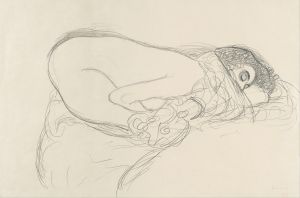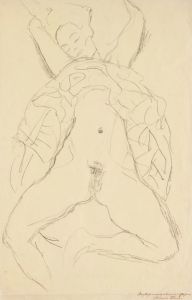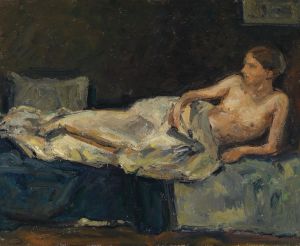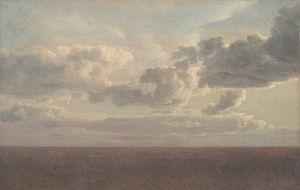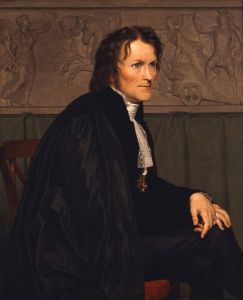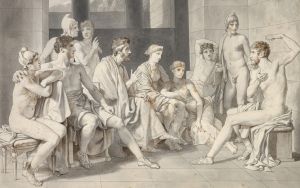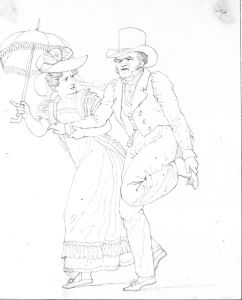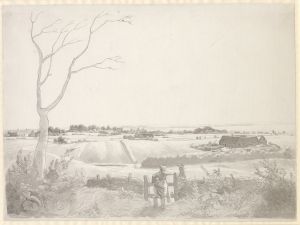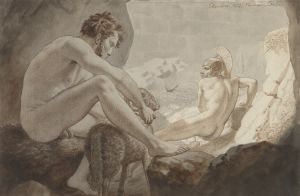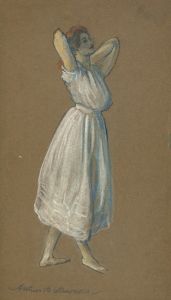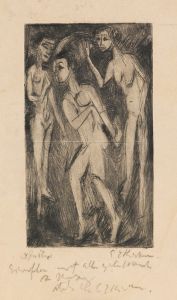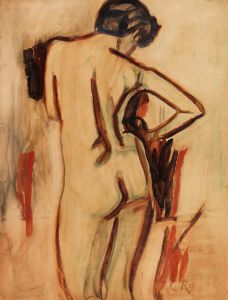
Liggende model
A hand-painted replica of Christoffer Wilhelm Eckersberg’s masterpiece Liggende model, meticulously crafted by professional artists to capture the true essence of the original. Each piece is created with museum-quality canvas and rare mineral pigments, carefully painted by experienced artists with delicate brushstrokes and rich, layered colors to perfectly recreate the texture of the original artwork. Unlike machine-printed reproductions, this hand-painted version brings the painting to life, infused with the artist’s emotions and skill in every stroke. Whether for personal collection or home decoration, it instantly elevates the artistic atmosphere of any space.
Christoffer Wilhelm Eckersberg, often referred to as the "father of Danish painting," was a prominent figure in the Danish Golden Age of painting. His work, "Liggende Model" (Reclining Model), is a notable example of his contribution to art, particularly in the realm of figure painting and the study of the human form.
"Reclining Model" was painted in 1833 and is a testament to Eckersberg's dedication to realism and his meticulous attention to detail. This painting is part of a series of studies Eckersberg conducted with live models, which was a practice he emphasized during his tenure as a professor at the Royal Danish Academy of Fine Arts. His approach was innovative for the time, as he encouraged his students to work from live models, a method that was not widely adopted in Danish art education before his influence.
The painting depicts a nude female figure reclining on a bed, rendered with a focus on naturalism and anatomical accuracy. Eckersberg's use of light and shadow is subtle yet effective, highlighting the contours and textures of the model's body. The composition is simple, with the model positioned diagonally across the canvas, drawing the viewer's eye along the length of her form. The background is minimal, ensuring that the focus remains on the figure itself.
Eckersberg's work in "Reclining Model" reflects his study and admiration of classical art, as well as his exposure to contemporary European art trends during his travels in Paris and Rome. His time in these cultural centers allowed him to study the works of masters such as Jacques-Louis David, whose influence is evident in Eckersberg's emphasis on clarity, form, and composition.
The painting is also significant for its role in the broader context of 19th-century art. During this period, there was a growing interest in the realistic depiction of the human body, moving away from the idealized forms that dominated earlier art. Eckersberg's work contributed to this shift, as he sought to portray his subjects with honesty and precision, capturing the individuality and physicality of the human form.
"Reclining Model" is housed in the Statens Museum for Kunst (National Gallery of Denmark) in Copenhagen, where it remains an important piece within the collection of Danish Golden Age art. The painting not only exemplifies Eckersberg's skill and artistic philosophy but also serves as an educational tool, illustrating the techniques and approaches he imparted to his students.
Eckersberg's legacy is evident in the works of his students, many of whom became prominent artists in their own right. His influence extended beyond his lifetime, shaping the course of Danish art and establishing a foundation for future generations of artists. "Reclining Model" stands as a testament to his contributions to the art world and his enduring impact on the study and appreciation of the human form.






